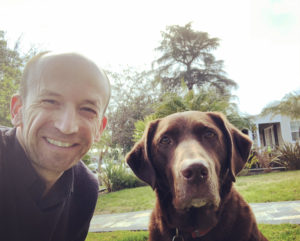Make Disciples Like Jesus
This blog is an excerpt from the free eBook, Invest in a Few: Giving Your Life to What Matters Most. Download it free here.
Now that we’ve looked at the dimensions of a disciple and toward the aspects of how to make disciples, let’s go back up to the mountain in Galilee. Remembering this scene will give us a clear vision of the end goal.
Jesus is casting his global vision to his disciples. He said, “All authority has been given to me in heaven and on earth. Go therefore and make disciples of all the nations, baptizing them in the name of the Father and the Son and the Holy Spirit, teaching them to observe all that I commanded you; and lo, I am with you always, even to the end of the age” (Matthew 28:18-20, NASB). As we have already seen, embedded in this vision statement is the purpose of the church—to make disciples. That is, the church exists to make disciples. Also embedded in this statement is the process of how to make disciples. This is incredible and serves to underscore the brilliance of Jesus. In one sentence he summarizes the product and the process!
Go Make Disciples
So what’s the process? From this passage, we can discern that Jesus taught disciple making with four clear steps. (Even though it’s not quite as simple as four “steps”, these steps will give you the basic framework of Jesus’ method.) The first step is to engage with spiritual explorers about the gospel of Jesus. As we have already seen, evangelism is the first step in the disciple making process. An evangelist once told me, “You can’t spell gospel without spelling go.” I like that. Jesus told his men to “go make disciples.” While not all of us are called to be missionaries, we are all called to be proactive. That’s what we can each take away from this verse: Jesus’ heart for us to go and move and shake the world for his kingdom. The word “go” is actually a participle and is better read, “as you are going make disciples.” As you are going along your normal routine, make disciples.
This is from Craig Ethredege’s eBook, Invest in a Few. Download the eBook here in your favorite format at no cost.
The gospel in the early church was clearly relational. The word often translated “household” (oikos in Greek) is used repeatedly in the New Testament. While it is usually translated “household”, it was also used in a broader sense to include extended family, friends, co-workers, and neighbors. The early church grew rapidly because they took the good news of Jesus back to their oikos. When Jesus healed a man possessed by demons, he told him to go back and share the good news with his family (oikos; Mark 5:19). When Zacchaeus came to faith in Christ, Jesus declared that salvation had come to his house (oikos; Luke 19:9). So disciple making begins with going to your established relationships and telling them about Jesus (see also John 1:40, 4:53; Acts 16:14-15; 16:30-34).
The second step in the process is to connect new believers into a biblical community. Jesus said in our passage to baptize new disciples “in the name of the Father and of the Son and of the Holy Spirit.” Baptism not only identifies the person as a follower of Jesus but also includes them in the new community of believers where they can grow and be nurtured in the faith. As you look throughout the Scriptures, you find new believers being baptized and immediately included into the new community of faith–the church.
When Peter preached the gospel at Pentecost, thousands heard the gospel and believed in Jesus. We read that immediately upon their profession of faith in Jesus, they were baptized: “So those that received his word were baptized, and there were added that day about three thousand souls. And they devoted themselves to the apostles teaching and the fellowship, to the breaking of bread and the prayers” (Acts 2:41-42). It’s clear that once a person believed in Jesus, they were quickly baptized, identifying themselves with Jesus. They were included into a new community of Jesus followers. These new believers were not baptized to just go home and continue life as before. No, they were baptized and then they became “devoted” to the apostles teaching, and to the fellowship of their new community of believers. They were even devoted to breaking bread together and praying together. Baptism and fellowship went hand in hand. From this point forward, the normal pattern of the Christian experience was for baptized believers to immediately be included in the fellowship and community of believers. In fact, it would have been inconceivable in the New Testament to find a baptized believer who refused to be a part of a local church. Even those who seemed to be baptized when there was no church became instrumental in starting new churches. The Philippian jailer who was baptized with his family at night is thought to have become instrumental in the new church at Philippi that supported Paul in his missionary journeys (Acts 16:33). The Ethiopian official that was baptized in the desert after hearing the gospel from Philip is thought to have carried the gospel to Ethiopia and started the first church in Africa (Acts 8:35-38). Jesus set the pattern in motion: once a person comes to faith in Christ, he should immediately be baptized and included in a local community of believers.
The third step is to train disciple makers to walk with God. Jesus said disciples are to learn to obey him in everything: “Teaching them to observe all that I have commanded you…” (Matthew 28:20, NASB). In this phase of disciple making—and it continues forever in a sense—the disciple is trained to walk with God on their own and to begin to develop the character and competencies of Jesus. In 1 Timothy 4:7, Paul says “train yourself to be godly” (NIV). Paul said that just as the athlete “goes into strict training” to get a temporary crown, he disciplines himself for an eternal reward (1 Corinthians 9:25, NIV).
This phase of equipping and training involves discipline, including teaching disciples how to read God’s word on their own and cultivate a personal relationship with Jesus through prayer; it involves teaching how to share their faith and reflect the love of God to the people around them; and it involves teaching disciples how to trust Jesus with every circumstance of life, putting him first in everything.
The fourth and final step is not clearly stated in this passage, but it is implied. Jesus said disciples are to obey everything he commanded, which includes the command to “make disciples.” Jesus intended for his disciples to make disciples. Therefore, the fourth step is releasing new disciples to multiply their life in others. Before his death, Jesus told his men, “By this my Father is glorified, that you bear much fruit and so prove to be my disciples” (John 15:8). Maturity multiplies. A mature plant bears fruit, a mature animal produces offspring, and a mature follower of Jesus multiplies disciples.
The Promise
That’s what happened in the early church. In Acts 6:7, Luke says “The word of God continued to increase and the number of disciples multiplied greatly in Jerusalem.” So Jesus gave us a clear product: make disciples. He also gave us a clear process: engage explorers, connect believers, grow disciples, and go multiply. Jesus also gave us a wonderful promise: “If you make it your goal to make disciples and you follow the process I have given you then I will be with you—always—to the very end of the age.” That’s an incredible promise for you and me. When we are committed to making disciples the way Jesus did, we will never lack his presence, and along with that, his power! Now that you have a good idea about the product and process of disciple making, it’s time to get down to practice of making disciples. The first question is, Who should you disciple?
Written by Craig Etheredge
A gifted communicator, author, and Bible teacher and the Lead Pastor at First Colleyville, a thriving church in the Dallas/Fort Worth area, Craig Etheredge is the host of Morning Thrive, a radio program that covers central Texas. He is Founder and President of discipleFIRST ministries and a regular speaker at the FlashPoint Conference across the United States. Craig is also Adjunct Professor of Discipleship at Southwestern Baptist Theological Seminary in Fort Worth, Texas and is actively involved in his local community serving on various boards.







